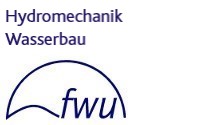RiskAware - Development of a generative planning tool on heavy rainfall risk-aware urban planning
Project Data
| Duration: | 01.03.2025 - 29.02.2028 |
| Lead: | Siegen University, Chair of Hydromechanics and Hydraulic Engineering |
| Partners: | Okeanos, Smart Data Solutions GmbH |
| Project Management: | Ingrid Althoff, Jorge Leandro |
| Project Team | Dr. Ingrid Althoff, Leonie Müller, M.Sc., Univ.-Prof. Dr. Jorge Leandro, Dr. Henning Oppel |
| Project Funding: | Ministry of Economic Affairs, Industry, Climate Action and Energy of the State of North Rhine-Westphalia, EFRE/JTF program |
| Funding Program: | GreenEconomy.IN.NRW |
| Further Information: |
Aim and content of the project
At the current time, heavy rain hazard maps (RHM) provide information on areas with an increased risk of flooding/inundation. Thus, they can be used to protect the population or objects and for spatial planning purposes. However, these maps only consider the existing buildings at the time of drawing up and can no longer accurately represent the risk in the case of structural changes.
Hence, in the frame of the RiskAware project, a generative tool is being developed that aims for dynamisation of these static RHM. Using AI-based technology, inundation-relevant features (terrain model, buildings, roads, etc.) are extracted from remote sensing data, from which an associated RHM will be created. For this purpose, existing RHM are used as training and target values. As a result of the innovative learning strategy (learning based on inundation-relevant features), transferability to any area and continuous updating is guaranteed. This makes the direct impact of objects and spatial planning on the risk of heavy rain visible for the first time, making a major contribution to water-sensitive planning and climate-resilient design. In addition, transferability and continuous updating allows the drawing up of new maps and features, which can also transferred to digital city twins, thus integrating the topic of environmental risk.



